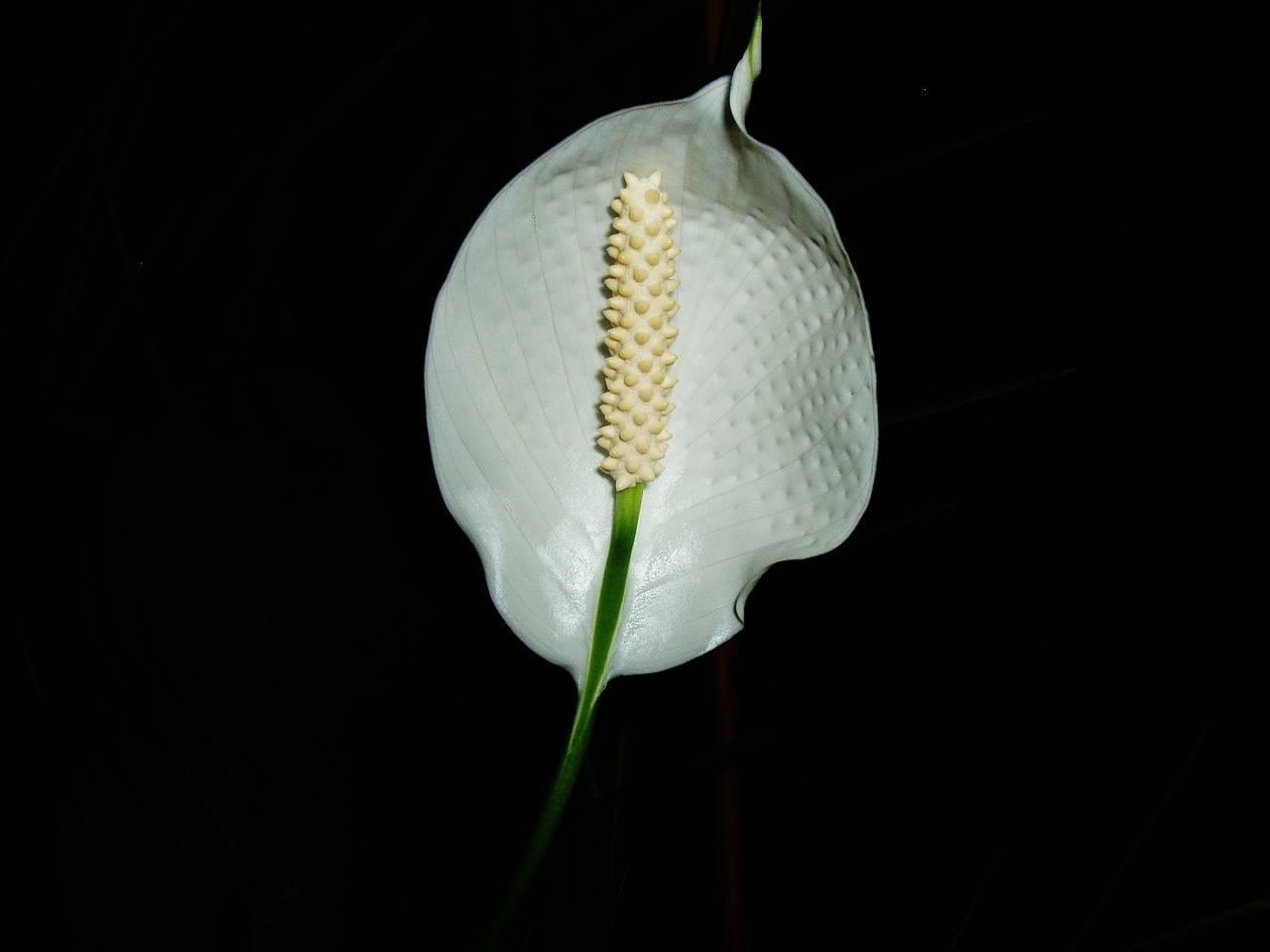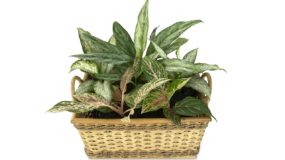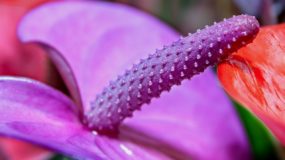Spathiphyllum is a tropical plant that grows easily in homes and apartments. It is characterized by unpretentiousness in home care, constant flowering and beautiful flowers that elegantly adorn the interior of the premises.
According to experienced gardeners, spathiphyllum fills the house with positive energy and brings happiness and prosperity to the owners. If there is no mutual understanding in the family, and scandals and quarrels are a frequent occurrence, the flowering of the plant stops, and the tips of the leaves dry out. Often a plant dies.
The homeland of spathiphyllum is considered the rainforests of the Philippines, America, Colombia, Brazil and Venezuela.
The opinions of florists and flower growers agree that this flower is undemanding in care.
Secrets of caring for spathiphyllum at home
- Watering. In spring and summer, spathiphyllum needs abundant watering, since during this period the plant actively blooms. The main thing is that in the pauses between watering, the outer layer of the soil will dry out, since overmoistening is fatal. In autumn and winter, moderate watering. During this period, the plant lasts longer without watering, but I do not advise you to leave it unattended. If in winter you keep spathiphyllum on a cool windowsill and water it abundantly, problems with the root system cannot be avoided.
- Lighting. The plant feels great when scattered light falls on it. Despite the fact that spathiphyllum loves lighting, direct rays of the sun cause serious damage to leaves. For this reason, I advise you to keep the pot under the cover of shade. In summer, shading is a must.
- Temperature. 16 degrees of heat - the average indicator in cold weather. Even if the temperature regime decreases by several degrees, the plant will not suffer, but development will slow down. In summer and spring, the optimum temperature is 23 degrees. With abundant watering in summer, spathiphyllum will withstand even temperatures approaching 30 degrees.
- Air humidity. Spathiphyllum is not afraid of high humidity. Florists recommend regularly spraying the flower, like croton. To create a good microclimate, plant the plant in a pot with a tray, the water from which during evaporation will provide comfortable conditions.
- Top dressing. In early spring, use mineral fertilizers for top dressing. Take one and a half grams of fertilizer per liter of water. During the growth of a young plant, feed twice a month, after the number of procedures for fertilizing spathiphyllum, halve it. In winter, feed once a month with smaller doses.
- Transfer. Transplant once a year in spring. Along with the growth of the stem, the root system, which fills the pot, also increases. Be sure to keep in mind that in an excessively large pot, spathiphyllum does not bloom well. Transplant with an earthen lump.
- Substrate. For spathiphyllum, soil consisting of peat, leafy soil, sand and humus is suitable. Such soil is characterized by high moisture capacity and excellent aeration.
Even a novice grower, home care for spathiphyllum will not bring much trouble if he listens to the recommendations made. It is only necessary to properly water the flower, maintain optimal humidity and feed on time.
Kinds
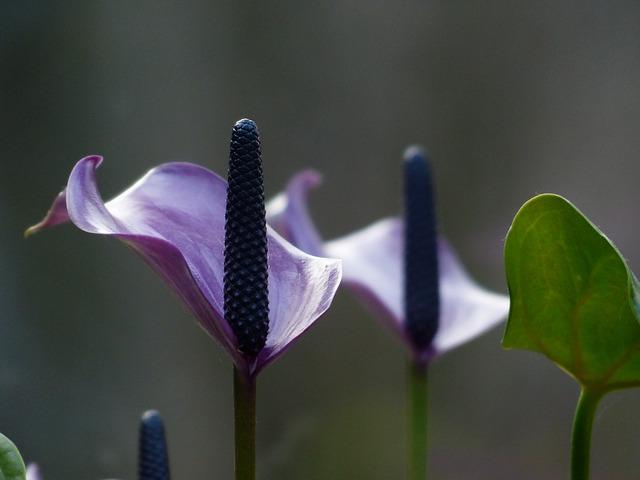
As practice shows, if the spathiphyllum is kept in a suitable place, it blooms from a young age and without interruption. The first flowers that last up to a month appear six months later.
Spathiphyllum purifies indoor air from harmful compounds, including xylene, formaldehyde, toluene, carbon monoxide and benzene. It also reduces the number of bacteria in the air and shows itself perfectly. in the fight against fungi and mold.
The most popular types of spathiphyllum
- Blooming. The variety is characterized by an underground creeping stem, bright green lanceolate leaves 20 cm long and 6 cm wide. Peduncle 25 cm long. Spike inflorescence with a white, slightly concave blanket. It pleases the eye with flowering all year round.
- Charming. Reminds the previous variety of spathiphyllum. The list of differences consists of larger leaves and a light green hue of the flower bedspread. It blooms throughout the year.
- Wallis. The most compact variety. Leaves 5 cm wide and 20 cm long with distinctly depressed veins. The highlight of the species is a two-tone cob blanket, which slowly turns from white to green. It does not bloom in winter.
- Cannulate. The plant has large bright green ovoid leaves that resemble foliage canna. The white veil of a green shade is combined with a yellowish cob and fragrant flowers. Excellent houseplant with excellent decorative qualities.
The listed types of spathiphyllum are suitable for maintenance in an apartment. They are easy to care for and undemanding to living conditions, just like popular types of cacti.
I advise you to present such a flower to a girl as a gift. The main thing is that she liked indoor plants, and she was not lazy to pay a little attention to the green pet.
Spathiphyllum reproduction
We discussed the subtleties of caring for the hero of the article. Consider the propagation of spathiphyllum. This procedure is simple.
The first way - cuttings
Vegetative propagation methods are applicable to many plants, including dieffenbachia, croton, dracaena and spathiphyllum. This is the most popular way of propagating spathiphyllum due to its simplicity.
- At the base of a full-fledged plant, “babies” appear, which are a leaf rosette with roots. With the advent of spring, carefully separate them. The main thing is that the roots do not break off. To root the resulting cuttings, use perlite or wet sand.
- To ensure that the propagation of spathiphyllum passes without trouble, be sure to cover the new bush with a perforated transparent cap. Otherwise, the stalk will have to be aired.
- As soon as the root system gets stronger and grows, move the young plant to the ground. I talked about the composition of the substrate at the beginning of the article. Provide standard flower care.
Method two - rhizome division
Spathiphyllum can also be propagated by a method involving the division of the root system. This approach provides one hundred percent survival. However, the novice’s inept actions can lead to the death of the mother plant. For this reason, experienced gardeners resort to this method.
- The operation to divide the rhizome is carried out in the spring. This time is best for transplant manipulations.
- Using a sharp knife, carefully divide the rhizome into parts, and treat the sections with charcoal. Subsequent actions are similar to propagation by cuttings.
The third way - seed propagation
You can get a young spathiphyllum plant with the help of seeds, but this is an unreliable way. Practice shows that it is real to propagate a plant at home using seed material, but not every attempt succeeds.
- It is necessary to pollinate the flowers artificially, which is not always possible. Seeds are characterized by low germination and getting sprouts is problematic.
- I recommend sowing seed material in a container with a sand-peat mixture, which must be covered with a piece of glass. Control the humidity and ventilate the sprouts, otherwise suffocate.It is easier to propagate spathiphyllum vegetatively.
An interesting fact: it is impossible to propagate spathiphyllum by rooting the leaf. If you lower the sheet in a container of water, it will not release the roots and will rot. It will end similarly if you stick a leaf into the soil. Since the seed material is not very suitable for this purpose, it is better to propagate by cuttings or by dividing the root.
Breeding problems, pests, diseases
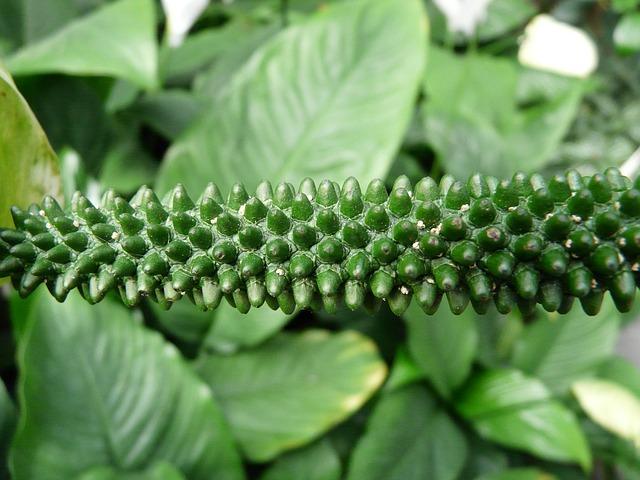
Although spathiphyllum is not a capricious plant, in some cases it gives the owner a lot of trouble. Improper care instantly affects the condition of leaves that turn yellow or black, and elasticity decreases. The presence of these symptoms indicates breeding problems.
Pests
First, let's talk about pests that lead to the appearance of unpleasant diseases. Spathiphyllum has a large number of enemies.
- Mealybug. Appears due to dampness and high soil moisture. Having chosen a defenseless plant, the pest settles between the leaves. Inspect the flower regularly. To remove a small number of insects, a clean rag and an alcohol solution are suitable. In the case of global infection, tincture of citrus peels along with insecticides will come to the rescue.
- Sooty mushroom. It affects the upper side of the leaves. The plant signals the appearance of soot fungus with blackened leaves. This ailment is subject to prompt elimination, since it interferes with respiratory processes and photosynthesis. To combat soot fungus, soapy water is used, which treats the damaged surface.
- Shield aphids. The appearance is evidenced by dark spots that cover the stems and leaves. For effective treatment, spray the plant with a composition prepared on the basis of a soap-tobacco solution and denatured alcohol. If you leave the problem unattended, in the future the leaves will begin to curl and dry.
- Spider mite. This pest poses the greatest threat to spathiphyllum. Its presence is easily identified by the web on the foliage. To fix the problem, remove the cobwebs, and treat the flower with a soapy solution. In severe cases, I recommend using insecticides or ground sulfur.
To prevent damage to the green pet by pests, regularly wipe the leaves with a wet sponge, but do not forget to cover the soil with polyethylene before doing so.
What to do if the leaves turn black and turn yellow
Most often, yellowing leaves of spathiphyllum leads to improper care. Since the natural flower grows in the tropics, he likes heat with diffused light and humidity. Dry air, sunshine, low temperature, improper watering - this is not a complete list of reasons why a flower dies.
A lot of damage to the plant and the insects that settled on it. If yellowness quickly captures the leaves, probably during the inspection of the flower you will find uninvited guests on the stems.
Often the problem with yellowed leaves is pathological. In an adult plant, the foliage turns yellow after prolonged flowering. To restore strength and resume growth, the flower discards leaves.
If the plant withers, as soon as possible determine the root cause of the phenomenon and proceed with elimination. A close inspection will help.
Causes and methods of combating yellowing of leaves in spathiphyllum:
- Pests. If they are, treat the plant with a special composition, and thoroughly disinfect the soil.
- Wrong watering. If the soil is excessively dry, I do not recommend immediately pouring it. I recommend increasing the amount of water gradually, carefully monitoring the condition of the plant.
- Wrong location. Spathiphyllum loves heat and diffused light. However, he hates heating appliances and drafts.
- Low humidity. Regular spraying of leaves helps to solve the problem.
- Close pot. The solution to the problem is to transplant into a spacious container.
- Blackening of leaves is the first sign of dying of roots. Excessive top dressing and excessive watering lead to blackening of foliage. If the root system rots, transplanting to new soil will help correct the situation.
- With moisture deficiency and low temperature, the edges of the leaves turn black. To make the flower come to life, systematize watering and move the plant to a room with the recommended temperature. Fight blackening foliage quickly, otherwise you will lose spathiphyllum.
To avoid the problems listed above, it is enough to follow the rules of maintenance and care.
What to do if spathiphyllum does not bloom
In everyday life, spathiphyllum is called "feminine happiness." This name comes from the shape of flowers resembling a female silhouette. It is believed that thanks to this plant, unmarried women find a man, and married women have children.
- In order for the plant to throw flowers, the root system must completely fill the pot. In this case, do not rush to change. Perform this procedure after the spathiphyllum fades.
- The plant does not like the sun's rays, which lead to burns on the foliage. In such conditions, it does not bloom. Keep the pot in a bright place where the sun does not fall.
- The appearance of flowers depends on the condition of the leaves. Cut off the dried ends. Wipe the foliage regularly with a damp cloth and spray the plant.
- To stimulate flowering, put the pot in a shaded place for a while and water it once a week. Once in the usual conditions, the plant will seek active flowering.
- Strongly affects the flowering of spathiphyllum top dressing. During the spring-summer season, feed twice a month, and once in the cold. In the case of a flowering plant, mineral solutions are suitable for fertilizing the soil. In other cases, I recommend the use of nitrogen fertilizers.
Observing these rules, you will make the plant healthy and beautiful. And it will delight you with elegant flowers and bring a lot of happiness.

